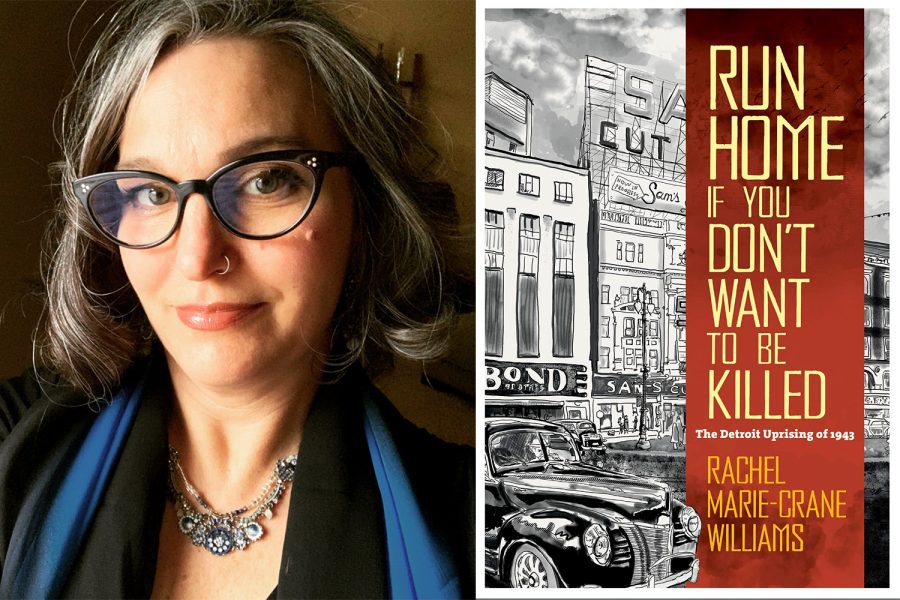University of Iowa professor’s graphic novel sheds light on historical racial uprising
Set to release this March, UI professor Rachel Marie-Crane Williams’ debut graphic novel is a unique retelling of the 1943 Detroit uprising, and the racial violence that took place.
Photo of Rachel Marie-Crane Williams and the cover art of “Run Home if You Don’t Want to be Killed.” Contributed.
February 8, 2021
For the past 13 years, UI professor Rachel Marie-Crane Williams has poured over research and an in-depth investigation about the 1943 Detroit race riots. Her work will culminate in a full-length graphic novel, to be released in March.
Williams is an associate professor at the University of Iowa in both Gender, Women’s, and Sexuality Studies and the School of Art and Art History. Her upcoming novel, Run Home If You Don’t Want to Be Killed: The Detroit Uprising Of 1943, is expected to release on March 8.
The book, which takes the form of a graphic novel, tells the story of the Detroit riots of June 1943, and covers what led up to the wave of destructive and deadly civil turmoil. Under the pressures of both wartime industrial production and the emerging Civil Rights Movement, the riots set the stage for massive unrest and racial violence, which ultimately took the lives of thirty-four innocent Black civilians, and injured hundreds more.
Based on archival evidence and first-hand accounts from survivors of the incident, the graphic historiography creates a vivid retelling of the racism and tension leading up to the violence during that summer.
RELATED: Iowa City author’s novel to be adapted into film starring Amy Adams
The book itself took over a decade to complete, with detailed drawings of real events to make for a unique portrayal of the prominent and horrific day in history. Williams described the process as lengthy but enlightening, especially within the research and investigation she did to create the most accurate depiction possible.
“It took me about thirteen years to do all the drawing and the research,” Williams said. “There were times when I thought ‘I’m not going to finish this, I’m sick of it,’ but I did.”
The novel is far from Williams’ first work on the subject of historical retellings involving race, but it is her first full-length graphic novel. She has also written and created art about events such as the 1898 coup and subsequent massacre in Wilmington, North Carolina. While researching for *Run Home,* she also learned and wrote about the story of Mary Turner, a victim of the May 1918 lynchings in southern Georgia.
In addition to originating from an area of North Carolina close in proximity to these historical events, Williams finds her inspiration to write about these topics from her fascination with the history of the Civil Rights Movement, which only grew after heavily researching for this project.
“1943 is a really interesting year for civil rights in this country,” Williams said. “A lot was going on. And Detroit at the time was called the ‘Arsenal of Democracy,’ which I also think is super ironic.”
Additionally, though she began working on *Run Home* over a decade ago, Williams said she feels as though it is especially timely in the light of recent events. Specifically, the Black Lives Matter protests of 2020, and the more recent riot at the U.S. Capitol, which she described as an eerie parallel to the 1943 uprising in Detroit.
“I had no idea when I started [Run Home If You Don’t Want To Be Killed] thirteen years ago, that all these recent things would happen,” Williams said. “For me, I just want people to recognize that we’ve been here before; we’ve made these mistakes before and we continue to make them.”




